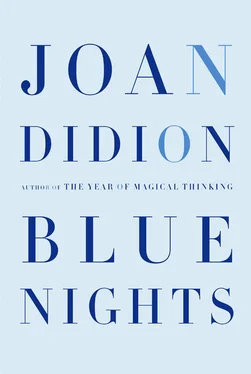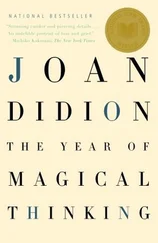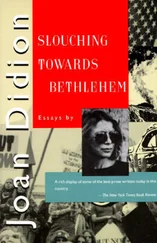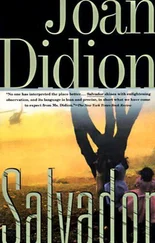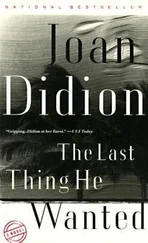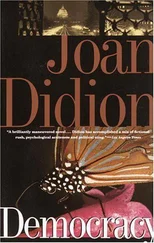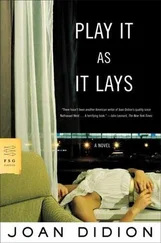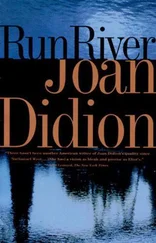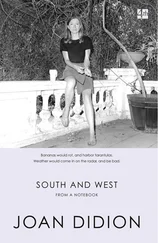This book is for Quintana
I n certain latitudes there comes a span of time approaching and following the summer solstice, some weeks in all, when the twilights turn long and blue. This period of the blue nights does not occur in subtropical California, where I lived for much of the time I will be talking about here and where the end of daylight is fast and lost in the blaze of the dropping sun, but it does occur in New York, where I now live. You notice it first as April ends and May begins, a change in the season, not exactly a warming — in fact not at all a warming — yet suddenly summer seems near, a possibility, even a promise. You pass a window, you walk to Central Park, you find yourself swimming in the color blue: the actual light is blue, and over the course of an hour or so this blue deepens, becomes more intense even as it darkens and fades, approximates finally the blue of the glass on a clear day at Chartres, or that of the Cerenkov radiation thrown off by the fuel rods in the pools of nuclear reactors. The French called this time of day “l’heure bleue.” To the English it was “the gloaming.” The very word “gloaming” reverberates, echoes — the gloaming, the glimmer, the glitter, the glisten, the glamour — carrying in its consonants the images of houses shuttering, gardens darkening, grass-lined rivers slipping through the shadows. During the blue nights you think the end of day will never come. As the blue nights draw to a close (and they will, and they do) you experience an actual chill, an apprehension of illness, at the moment you first notice: the blue light is going, the days are already shortening, the summer is gone. This book is called “Blue Nights” because at the time I began it I found my mind turning increasingly to illness, to the end of promise, the dwindling of the days, the inevitability of the fading, the dying of the brightness. Blue nights are the opposite of the dying of the brightness, but they are also its warning .
July 26 2010.
Today would be her wedding anniversary.
Seven years ago today we took the leis from the florist’s boxes and shook the water in which they were packed onto the grass outside the Cathedral of St. John the Divine on Amsterdam Avenue. The white peacock spread his fan. The organ sounded. She wove white stephanotis into the thick braid that hung down her back. She dropped a tulle veil over her head and the stephanotis loosened and fell. The plumeria blossom tattooed just below her shoulder showed through the tulle. “Let’s do it,” she whispered. The little girls in leis and pale dresses skipped down the aisle and walked behind her up to the high altar. After all the words had been said the little girls followed her out the front doors of the cathedral and around past the peacocks (the two iridescent blue-and-green peacocks, the one white peacock) to the Cathedral house. There were cucumber and watercress sandwiches, a peach-colored cake from Payard, pink champagne.
Her choices, all.
Sentimental choices, things she remembered.
I remembered them too.
When she said she wanted cucumber and watercress sandwiches at her wedding I remembered her laying out plates of cucumber and watercress sandwiches on the tables we had set up around the pool for her sixteenth-birthday lunch. When she said she wanted leis in place of bouquets at her wedding I remembered her at three or four or five getting off a plane at Bradley Field in Hartford wearing the leis she had been given when she left Honolulu the night before. The temperature in Connecticut that morning was six degrees below zero and she had no coat (she had been wearing no coat when we left Los Angeles for Honolulu, we had not expected to go on to Hartford) but she had seen no problem. Children with leis don’t wear coats, she advised me.
Sentimental choices.
On the day of that wedding she got all her sentimental choices except one: she had wanted the little girls to go barefoot in the cathedral (memory of Malibu, she was always barefoot in Malibu, she always had splinters from the redwood deck, splinters from the deck and tar from the beach and iodine for the scratches from the nails in the stairs in between) but the little girls had new shoes for the occasion and wanted to wear them.
MR. AND MRS. JOHN GREGORY DUNNE
REQUEST THE HONOR OF YOUR PRESENCE
AT THE MARRIAGE OF THEIR DAUGHTER,
QUINTANA ROO
TO
MR. GERALD BRIAN MICHAEL
ON SATURDAY THE TWENTY-SIXTH OF JULY
AT TWO O’CLOCK
The stephanotis.
Was that another sentimental choice?
Did she remember the stephanotis?
Is that why she wanted it, is that why she wove it into her braid?
At the house in Brentwood Park in which we lived from 1978 until 1988, a house so determinedly conventional (two stories, center-hall plan, shuttered windows, and a sitting room off every bedroom) as to seem in situ idiosyncratic (“their suburbia house in Brentwood” was how she referred to the house when we bought it, a twelve-year-old establishing that it was not her decision, not her taste, a child claiming the distance all children imagine themselves to need), there was stephanotis growing outside the terrace doors. I would brush the waxy flowers when I went out to the garden. Outside the same doors there were beds of lavender and also mint, a tangle of mint, made lush by a dripping faucet. We moved into that house the summer she was about to start the seventh grade at what was then still the Westlake School for Girls in Holmby Hills. This was like yesterday. We moved out of that house the year she was about to graduate from Barnard. This too was like yesterday. The stephanotis and mint were dead by then, killed when the man who was buying the house insisted that we rid it of termites by tenting it and pumping in Vikane and chloropicrin. At the time this buyer bid on the house he sent us word via the brokers, apparently by way of closing the deal, that he wanted the house because he could picture his daughter marrying in the garden. This was a few weeks before he required us to pump in the Vikane that killed the stephanotis, killed the mint, and also killed the pink magnolia into which the twelve-year-old who took so assiduously removed a view of our suburbia house in Brentwood had until then been able to look from her second-floor sitting-room windows. The termites, I was quite sure, would come back. The pink magnolia, I was also quite sure, would not.
We closed the deal and moved to New York.
Where in fact I had lived before, from the time I was twenty-one and just out of the English Department at Berkeley and starting work at Vogue (a segue so profoundly unnatural that when I was asked by the Condé Nast personnel department to name the languages in which I was fluent I could think only of Middle English) until I was twenty-nine and just married.
Where I have lived again since 1988.
Why then do I say I lived much of this time in California?
Why then did I feel so sharp a sense of betrayal when I exchanged my California driver’s license for one issued by New York? Wasn’t that actually a straightforward enough transaction? Your birthday comes around, your license needs renewing, what difference does it make where you renew it? What difference does it make that you have had this single number on your license since it was assigned to you at age fifteen-and-a-half by the state of California? Wasn’t there always an error on that driver’s license anyway? An error you knew about? Didn’t that license say you were five-foot-two? When you knew perfectly well you were at best — (max height, top height ever, height before you lost a half inch to age) — when you knew perfectly well you were at best five-foot-one-and-three-quarters?
Читать дальше
Конец ознакомительного отрывка
Купить книгу
